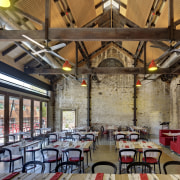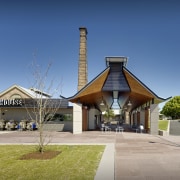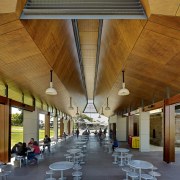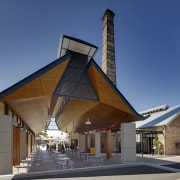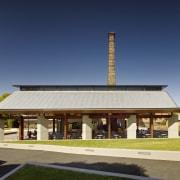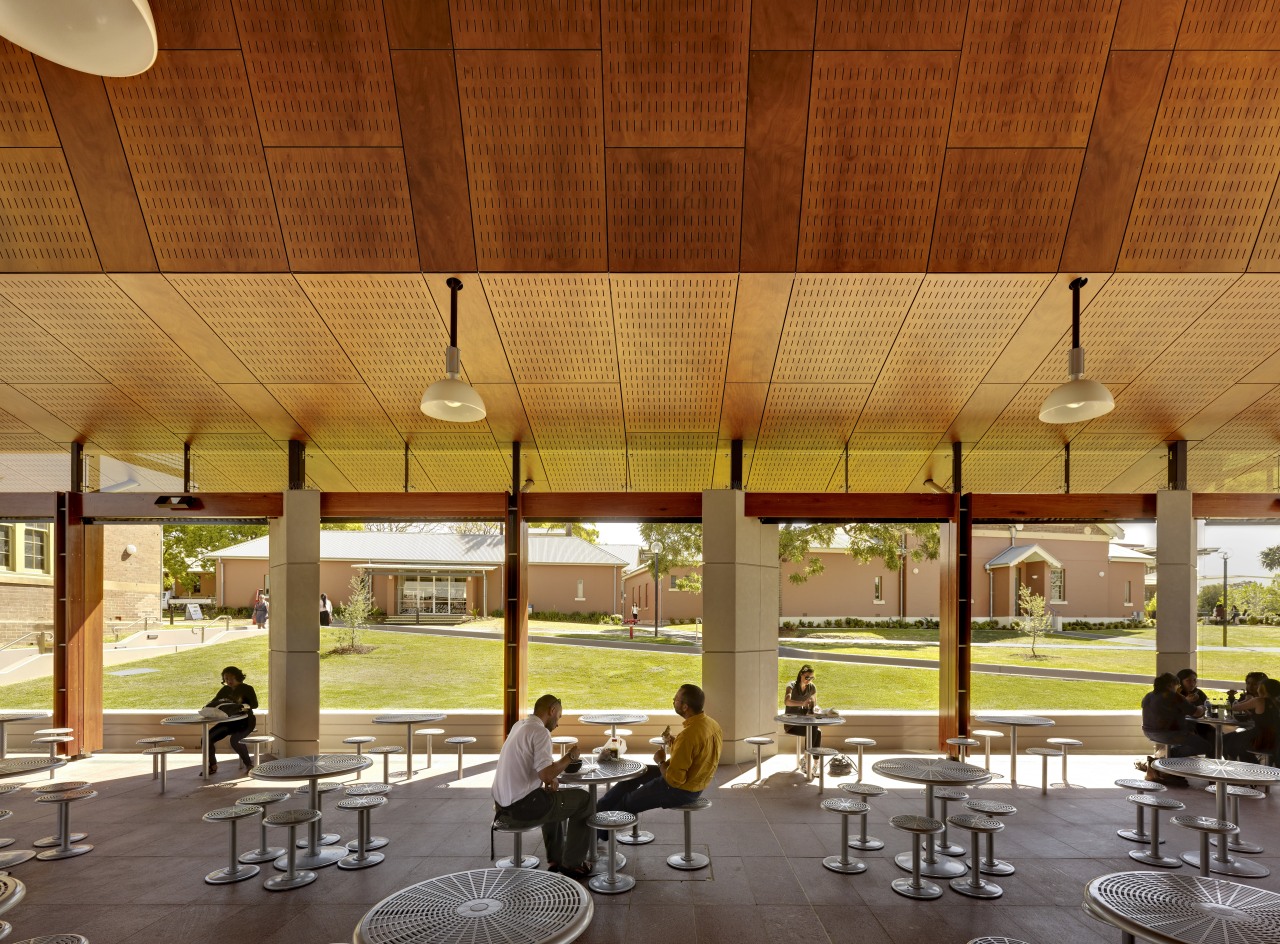History lesson adaptive re-use for University
Student precinct now a hub for university
Every campus needs a student precinct, a third place that is both a central focal point and an informal gathering place. At the Parramatta campus of the University of Western Sydney, established in 1998, that sense of a third place had never evolved, says the architect commissioned to design a major redevelopment.
Alex Kibble of Tanner Architects says the university has multiple campuses and students are spread over a wide geographical area. The university is forecasting significant growth across its campuses in the years ahead, and student numbers at the Parramatta campus could potentially double.
"In planning new facilities to cater for the influx of students, it was clear the campus needed a student hub," the architect says. "The campus already had a precinct, Union Square, but this was under utilised as there was essentially nothing there."
Because the university is on a site that was initially a school for female orphans and then a psychiatric hospital, there are many old buildings that have been adapted for use as offices and teaching spaces. The original boiler house, which sits in the centre of the campus, was not one of these, however. Kibble says the brick building, constructed in 1894, was derelict and had been walled off for many years following a fire in 1996.
"The boiler house and its tall brick chimney, which is a point of reference on campus, are part of the history of the site coal-fired boilers once supplied steam for heating, and originally there was an adjacent timber-framed laundry building. We could see there was an opportunity for adaptive re-use as a restaurant within the redeveloped student precinct."
Kibble says the central location was an added drawcard. The boiler house is on the main thoroughfare between the library and the bulk of the teaching spaces and lecture theatres.
"The redevelopment had already transformed two large buildings for student amenities and these were opened up to the precinct, with decks providing a direct link to the outdoor environment."
Rather than gut the entire interior of the boiler house, the team worked with the existing timber rafters and trusses, and the remnants of the original timber sarking. The rafters and trusses were still in good condition despite having been exposed to the weather for the past 15 years.
"We added a lantern roof, which was designed to be an architectural expression of a form seen in other buildings on campus," says Kibble. "This is supported by the original structure and a layer of new plywood that sits over the old sarking."
The character of the original boiler house remains intact. Many of the original items within, including four large hoppers, have been incorporated into sculptural artworks by local artist Philip Spark.
The lantern roof form reappears on the new pavilion building that adjoins the boiler house, which accommodates a noodle bar.
"This is a semi-outdoor covered area that's a bit like a market hall within a market square," says Kibble. "It has a Prodema composite resin panel ceiling with a natural timber veneer, which adds visual warmth. The roof floats above large concrete columns that are oversized, but the scale is in keeping with the visual weight of the roof."
Another key part of the precinct redevelopment involved the landscaping of the urban plaza. This included a new water feature that provides a visual link to the Parramatta River. The running water also appeals to the different senses, creating a tranquil, cooling effect.
"The entire project was a collaboration between architects, landscape designers, artists and graphic artists," says Kibble.
Credit list
Client
Landscape architect
Construction company, phase 2
Mechanical and electrical engineer
Building codes consultant
Acoustic consultant
Graphic designer
Facade
Glazing fabricator
Concrete precaster
Paving
Paints
Veneers
Artists
Architect
Construction company, phase 1
Civil, structural and hydraulic enginer
Quantity surveyor
Kitchen consultant
Access consultant
Roofing
Glazing system
Timber supplier
Flooring
Granite
Ceilings
Public area furniture
Story by: Colleen Hawkes
Home kitchen bathroom commercial design
Contrast and connection
At one with the Amazon
Masculine meets mixed use


